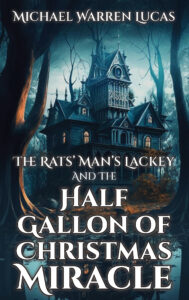Comparing how two different books sell is foolish. Books are not fungible. Comparing how two different marketing campaigns do is likewise foolish. Neither marketing, nor readers, nor economic conditions are interchangeable.
But bear with me for a moment while I do it anyway.
The Kickstarter campaign for the Prohibition Orcs duology brought in about $11,000. Which, while not Brandon Sanderson’s millions, was way cool.
I intended to use the Devotion and Corrosion campaign to compare “Kickstarter with Twitter” to “Kickstarter without Twitter.” That seemed sensible, right? The videos are comparable, the campaigns are comparable. The story for the orcs is stronger, because “Orcs in Prohibition” is a solid hook, but still, it’d do something, right?
But then Kickstarter did not give D&C the “Projects We Love” button, which meant that they won’t promote it for me. My attempted comparison fails. I suspect this is because D&C has less Big Idea and more gentle philosophical ambiance. We don’t like to think, we want orcish face-punching.
The campaign funded anyway, which is great. But I can’t do even my lame, heavily-caveated comparison. Facebook spreads my posts to a few of people I know and a couple of the folks who follow my fan page. While the Fediverse shares my posts more broadly, it’s definitely a less commercial space.
I had hoped D&C would hit $4,000. My marketing has saturated the people I know, however, and now I’m hoping it breaks $3000.
Disappointing? Not really. Thinking about it in pure financial terms is wrong.
D&C is doing “well enough.” A bunch of people, wonderful people, will get ebooks and paperbacks. A handful of folks (those with disposable income as well as exquisite taste) will get fancy leather-cased books covered in rats and brains and knives. I will cover expenses and most of a mortgage payment.
And I can be confident that my readers who follow me on the fediverse or my mailing lists or my blog or even on Facebook will at least consider at my next project, no matter what any CEO or billionaire has to say about it. Eventually, a fiction book from this no-name nobody will pretty reliably cover a mortgage payment.
I have what Twitter’s owner can never have.
Enough.
But if you want that fancy leather-cased book, you better grab one quick. Once the campaign is fulfilled, I’m not getting Studio 42 to make any more. In fact, let me post that picture, because it really is spectacular.

Comparing one book to another, or one Kickstarter to another, is foolish, but I can guarantee that you won’t find that many rats on any other leather-cased book.






